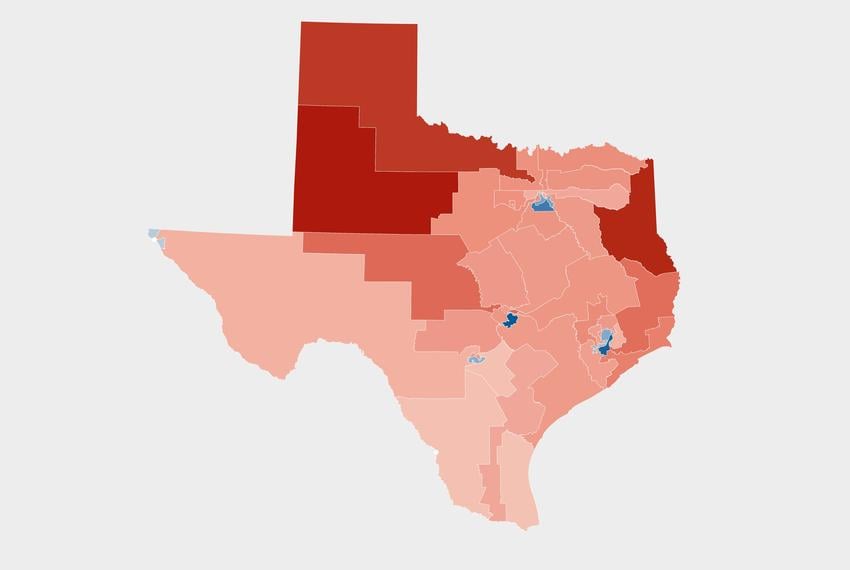Texas House Panel Approves Controversial Redistricting Plan
On Saturday, a Texas House panel moved forward with a congressional redistricting proposal that aims to create five additional districts favorable to Republican candidates. This decision comes amid strong objections from Democratic lawmakers who claim that the plan would disenfranchise voters of color.
Committee Vote and Hearing Process
The state’s redistricting committee, chiefly comprised of Republican members, endorsed the map with a 12 to 6 vote, following a series of hearings where U.S. House Democrats from Texas and members of the public voiced their concerns. This newly shaped map will be presented to the full House for consideration as early as next week.
During the hearing, GOP representatives acknowledged their intentions to redraw the districts in favor of their party. “Unlike others, I’m not shying away from our aims,” stated Representative Todd Hunter, the bill’s sponsor from Corpus Christi, adding that the creation of these five districts is predicated on political performance.
Political Context and Motivation
This redistricting initiative follows pressure from political operatives associated with former President Donald Trump, who urged state leaders to amend the map to help Republicans retain their narrow majority in the House during an upcoming challenging electoral cycle.
The proposed map is notably complex; it reorganizes several districts across major Texas urban areas, including Houston, Austin, and Dallas. The reconfiguration is designed to create five new districts that would have favored Trump by a margin of at least 10 percentage points in the 2024 election, where he secured 56.2% of votes in Texas. Currently, Republicans hold 66% of Texas’s 38 congressional seats, and the new delineation seeks to increase this percentage to 79%.
Concerns Over Voter Representation
Governor Greg Abbott, who included redistricting on the agenda for the special legislative session, cited a Justice Department letter that indicated potential unconstitutionality regarding racial gerrymandering in four of Texas’s districts. However, Republican lawmakers have been clear that their focus is not on resolving issues related to racial representation but rather on maximizing their control over congressional districts.
“These districts were drawn with political performance as the core factor,” Hunter emphasized, pointing out Republican inroads among Latino voters since the last redistricting effort in 2021.
Implications Under the Voting Rights Act
The U.S. Supreme Court’s ruling in 2019 permits states to construct electoral maps based on partisan interests. Nonetheless, under Section 2 of the Voting Rights Act, it is prohibited to carve out districts that dilute the voting strength of minority populations. Opponents of the new map argue that it strategically clusters voters of color into fewer districts while distributing them thinly in others, thereby undermining their ability to elect representatives of their choice.
Voices of Dissent from Texas Legislators
During the hearing, U.S. Representative Jasmine Crockett of Dallas stressed the importance of equitable representation, asserting, “Every citizen should have equal access to choose their representation.” She pointed out the risks of a map that consolidates voters of color, which could severely limit their representation.
Despite the rise in population among people of color in Texas, the new map outlines 24 majority-white districts, two more than under the previous configuration, which is currently under examination for its compliance with the Voting Rights Act.
Table: Overview of Current and Proposed District Changes
| District Type | Current Status | Proposed Status |
|---|---|---|
| Total Congressional Seats | 38 | 38 |
| Republican Majority | 66% | 79% |
| Majority-White Districts | 22 | 24 |
| Majority-Hispanic Districts | < 1 | 1 |
| Majority-Black Districts | < 1 | 2 |
As discussions unfold about the proposed map, legal challenges may arise, potentially taking months to resolve. Meanwhile, Texas House Republicans hold the votes necessary to advance the redistricting effort. Democrats, outnumbered and sidelined, face limited options to combat the proposal, with some contemplating extreme measures such as leaving the state to prevent a quorum.
U.S. Representative Lloyd Doggett from Austin condemned the map as an imposition from Trump, stating, “This is not a Texas map. It is a Trump map.” The coming days will be crucial in determining the future of representation in Texas.

